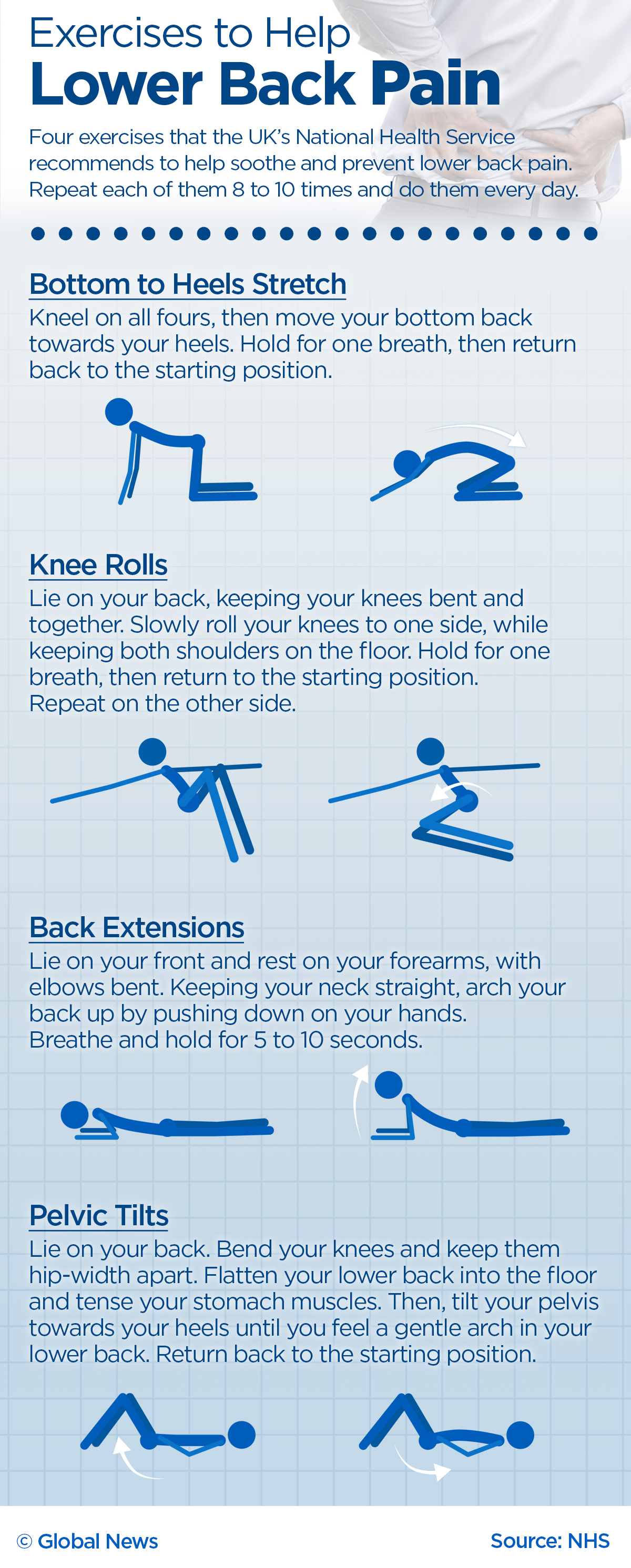Low back pain is the most common cause of disability worldwide, with eight in 10 people reporting the problem at some point in their lives, according to doctors.

But a new study published in the Lancet on Wednesday found that people aren’t often getting the care they need to address their back pain.
The best cure for most people? Exercise. Regular movement is the best way to help with the vast majority of cases of low back pain, according to Doug Gross, a co-author of the study and a professor of physical therapy at the University of Alberta.
Although many people believe that bed rest or medication is what you should do when you have back pain, “We know that the best management is just the opposite: you don’t rest, you don’t become immobilized,” said Gross.
“We tend to view back pain as something serious,” he said, and so assume that rest and medication are the answer. And if it doesn’t get better, patients get x-rays or MRIs or get referred to orthopedic surgeons. “Ultimately most of those things are ineffective and they don’t reduce the long-term disability that is associated with back pain.”
Although he recognizes that the pain might limit your movement somewhat for a little while, you should not cut back on all your activities. And, he says, you should be confident that you will get better and not hold back on activities out of fear.
“What we know is that about 80 per cent of new back pain episodes do recover and are better within a matter of weeks.”
Exercise might even help to prevent low back pain, he said. Although doctors don’t know precisely what causes the condition, “One of the biggest things that is associated with the development of back pain is a physically inactive lifestyle.”
“The only thing that has been consistently found to have any effect is exercise. A good, thorough exercise program does help to prevent low back pain.”
Most people don’t need an exercise program dedicated to their backs, he said. A general fitness program, with some additional simple stretches can help to prevent back pain or prevent it from returning. Exercise-wise, what’s most important is finding a program that you can stick to, said Gross.
Alberta’s BackActive program offers lots of tips relating to exercise and back pain, too.
However, if your back pain is following a trauma like a fall, or the pain gets worse or you have other symptoms like numbness radiating down through your legs, you should see your doctor, he said.
Part of the reason that people get unnecessary treatment is patients themselves, according to Jason Busse, an associate professor in the department of anesthesia at McMaster University in Hamilton, Ont., who researches chronic pain. “Medication is often the first approach because that’s what’s available and patients don’t want to leave a clinical encounter without something.”
“The pain can be severe. It can be awful. It can be really horrible. And we’ve been conditioned that when we have pain like that, it’s got to be something serious,” said Gross.
But that’s most often not the case, he said.
Busse thinks that the research in the Lancet highlights a problem that has persisted for decades — that even though scientific evidence suggests that staying mobile is important to recover from back pain, people are still getting prescriptions, going through expensive tests, and resting in bed.
He’s not sure why this advice persists, but thinks Canada’s health care system contributes to the problem: “Unfortunately the health care system that we have here, it’s fee-for-service not fee-for-results,” he said. “Whether the treatment is effective is not built into reimbursement.”



Comments